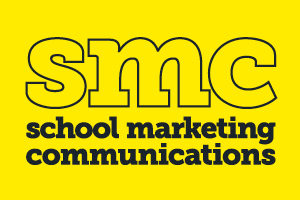When I was in high school I read a book called How to be Cool by Will Smith. At the age of 16, it got me thinking about the importance of physical appearance. On a daily basis, our appearance — or in marketing terms, our visual brand identity — is largely what people use to shape their foundational judgement. Similarly, the purpose and necessity of a style guide for your school will prove effective in ensuring all communications support your school’s objectives and mitigating any misguided or ill-informed judgements of your school or its educational offering. At 16, I bought a hair straightener, a pair of skinny jeans, and some black nail polish. Don’t judge, I did read a book about being cool.
So let us assume you have already nailed your school brand and articulated your school’s mission, vision, core values and key messaging, and dive into developing your visual style guide. The following ideas are our big three tips for how to create a visual style guide for your school brand:
1. Define your school colours
State the breakdown of each/all of your school colours. Be thorough and include the HEX, RGB, CMYK and PMS breakdown of each colour. Also include the presentation guidelines for these colours, ie. primary and secondary hierarchy, and colour groupings/combinations.
Why?
It is important to define the exact codes for your school colours so that for anyone — specifically, a designer — who picks up your style guide, they can quickly determine and build your colour in design software or accurately capture the colour in the printing process.
2. Be clear about logo usage and display
Demonstrate how your school crest (or logo) should be positioned, how big it should be, how and where it should sit on a page (e.g. top right hand corner), how much spacing should be left around it in any given document, the colours or variation of colour in your logo, and how to position your logo over other images/backgrounds.
Why?
Think of your school crest as any other logo. BMW don’t allow its signature circular emblem to be elongated into an oval to squeeze it into smaller spaces, nor would you see the Woolworths logo in anything but its trademark green colour. Your school crest embodies your brand, and it should remain consistent.
3. Provide font guidelines
Outline your font usage in the same way that you have defined the school colour specifications. Firstly, define the font family name. Next, determine the hierarchy of text used within your branding, from Heading 1 (the top heading) to Heading 2 and 3 and so on depending on how many Heading levels you’ve identified in your brand. Then, identify the subheading text, body text, bullet point, and caption text. Under each of these, list the font size, embellishments (italicised, emboldened or underlined) and the circumstance in which you would use them. If you have fonts from different families, list each of these attributes again for each font type.
Why?
As with the logo and colour usage, your font is linked to your brand identity. As such, it needs to be accurate and uniform across all media, publications and content. It should be professional and readable.
Got these sorted? Here are some other elements to consider:
Develop a suite of pre-designed templates
Brand consistency begins on the inside. It can be useful to have templates available on an internal network for easy access by internal stakeholders. Common templates include letterheads with all font-levels pre-determined and logos, sub-heads or taglines pre-filled, business cards, media release forms, invitations and program booklets. While templates can be suitable for internal use, for more significant large-scale school events, you might consider engaging a professional to design some bespoke items for your use.
Web, digital, and social media policies and guidelines
It is important to outline the usage of your brand not just in print and advertising collateral, but in the digital sphere as well. Iterating when and how to represent your school in digital news spaces, or on social media, is crucial.







